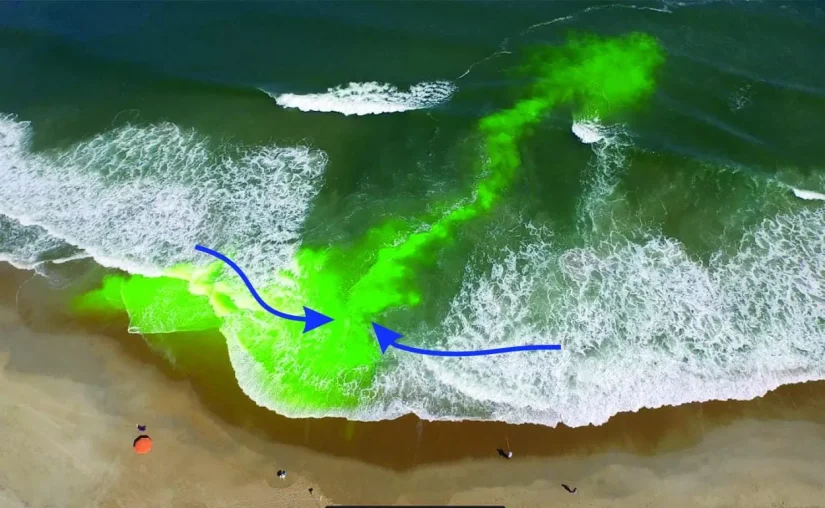
The tragic incident that occurred to several students from Mojokerto, who were swept away by waves at Drini Beach on Wednesday (Jan. 29), claimed lives.
The incident began when several students were playing in the water and ended up near the rip current area.
The victims were located in a gap between coral reefs, which is often used as a route for boats. This event happened when wave conditions and tide levels were high enough to form a rip current.
Rip currents are narrow but powerful water streams, usually perpendicular from the shoreline towards the sea.
These currents form when incoming waves break near the shore, creating a feeder current. The energy is reflected back towards the sea, and several feeder currents accumulate into a strong “channel” of water that flows back out to sea.
Lecturer at the UGM Vocational College (SV UGM) Hendi Fachturohman stated that, based on his previous research, the Drini Beach area does indeed have a persistent rip current.
“This type of persistent rip current can appear at certain times when wave conditions are sufficient,” said the man, who is currently pursuing his studies in the UK, via phone on Friday (Jan. 31).
Fachturohman added that the formation of rip currents is influenced by hydrodynamic conditions, such as waves and tides, as well as the bathymetric conditions or the depth of the seabed.
Hard structures like cliffs can also contribute to the formation of rip currents, as they reflect incoming waves.
However, rip currents can be either stationary or shifting, depending on the seabed’s morphology when the rip current forms.
“Increased wave activity can also strengthen rip currents as they generate more powerful feeder currents,” he explained.
To prevent further casualties, Fachturohman shared tips on recognizing several signs that can help identify the presence of a rip current. The easiest sign to recognize is the absence of foam after the waves break.
If the waves do not break and the water surface appears calm without foam or ripples, it actually indicates a hazardous reverse current.
“Most importantly, if you can’t swim, never go too far into the sea, and always follow the safety warnings from the authorities,” he advised.
If caught in a rip current, swimming to the right or left side is recommended. Then, swim along with the rip current until you exit the channel when the rip current breaks apart, making it easier to swim back to shore.
This approach is better than fighting the current, which would be very difficult and drain a lot of energy.
“During rip current conditions, victims often lose energy because they try to fight the current,” he explained.
In terms of mitigation and visitor education, Fachturohman believes that all stakeholders need to come together to formulate safer tourism management.
The government should support efforts by paying more attention to mitigation in coastal areas for rip currents and other disaster threats.
Additionally, tourism managers are expected to prioritize visitor safety and security and actively engage in education and outreach.
“Tourists should also take the initiative to seek out information on what to do and avoid when visiting the beach. Above all, follow the instructions from the authorities,” he said.
According to Fachturohman, many educational media and methods can be used to raise public awareness about rip currents. Access to information is now very easy.
“As researchers, we have also made efforts to convey various mitigation methods in collaboration with various media,” he said.
Moreover, tour leaders or parties involved in the tourism sector can also convey information about rip currents.
“Study tours are actually a perfect opportunity to educate about such matters, providing a learning process in the field,” he concluded.
Author: Jelita Agustine
Editor: Gusti Grehenson
Post-editor: Afifudin Baliya
Photo: X account @darmadi084

